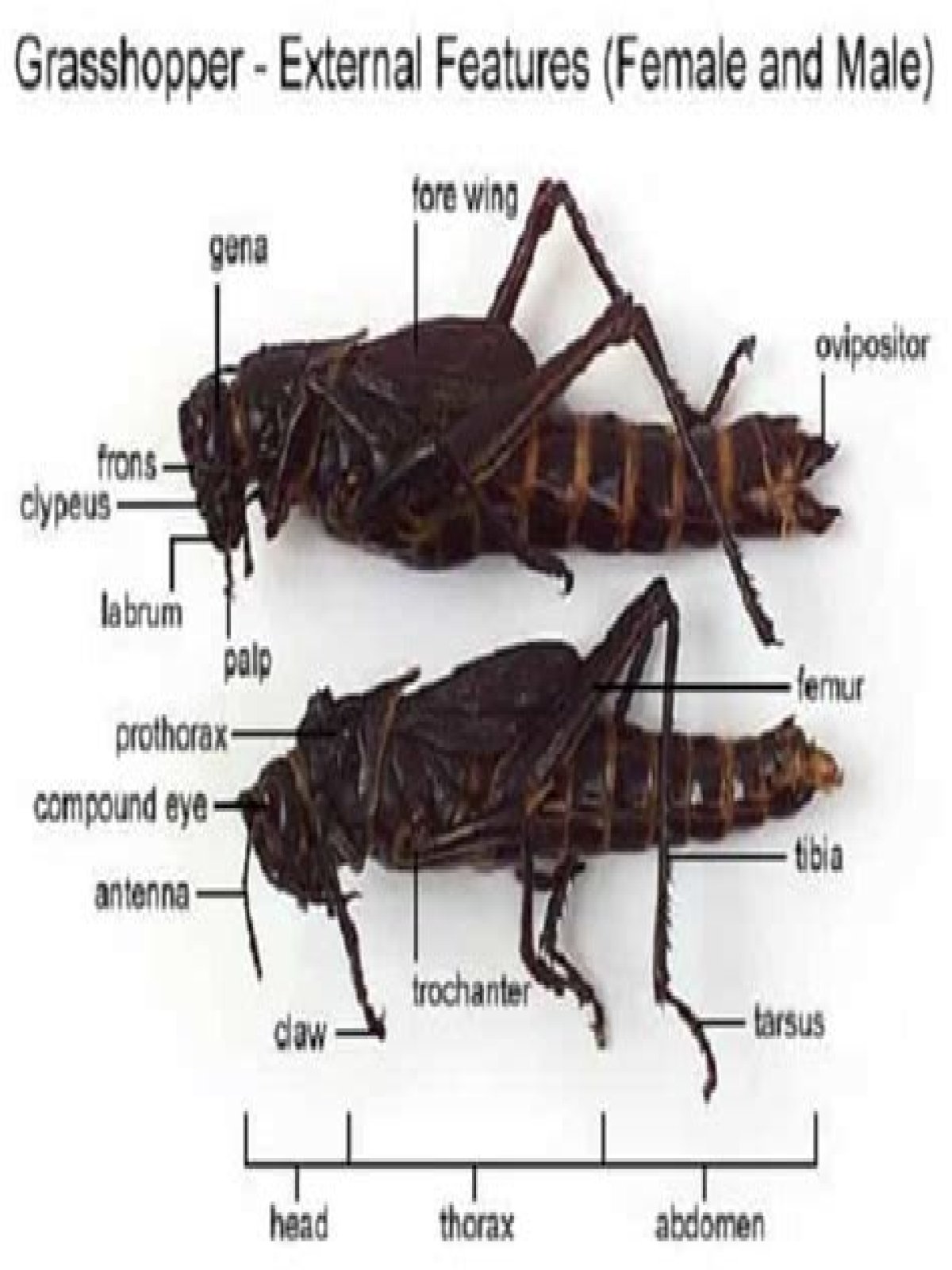What are the external features of grasshopper?
Furthermore, what are the features of grasshopper?
Grasshopper Characteristics Grasshoppers are medium to large insects. Adult length is 1 to 7 centimetres, depending on the species. Like their relatives the 'katydids' and 'crickets', they have chewing mouthparts, two pairs of wings, one narrow and tough, the other wide and flexible, and long hind legs for jumping.
Similarly, what three Grasshopper features identify it as an arthropod? As members of Phylum Arthropoda, grasshoppers and crayfish share many characteristics. They both have a hard chitinous exoskeleton with jointed legs, segmented body, compound eyes, digestive system in a body cavity, nervous system and open circulatory systems.
Also asked, which structure is part of the external anatomy of a grasshopper?
The thorax, locomotion center of the grass-hopper, is a stout, boxlike structure consisting of three fused segments: the prothorax, mesothorax, and metathorax. Each segment bears a pair of legs. The second segment bears a pair of fore-wings, the tegmina, and the third segment a pair of membranous hindwings.
What are the five major sensory organs of a grasshopper?
The grasshopper senses touch through organs located in various parts of its body, including antennae and palps on the head, cerci on the abdomen, and receptors on the legs. Organs for taste are located in the mouth, and those for smell are on the antennae.
Can grasshoppers kill you?
What is the study of grasshoppers called?
What is the purpose of grasshoppers?
Do grasshoppers have hearts?
Do grasshoppers have teeth?
Do grasshoppers sleep?
Do grasshoppers bite humans?
Are grasshoppers harmful to humans?
What are the parts of grasshopper?
How do grasshoppers get oxygen?
Can Grasshoppers fly?
What are the 3 main parts of an insect?
- The Head. The main visible parts on the head are the large compound eyes, the antenna (feelers), and the mouthparts.
- The Thorax. The thorax is the middle region of the body, and it bears the legs and wings--if wings are present.
- The Abdomen.
